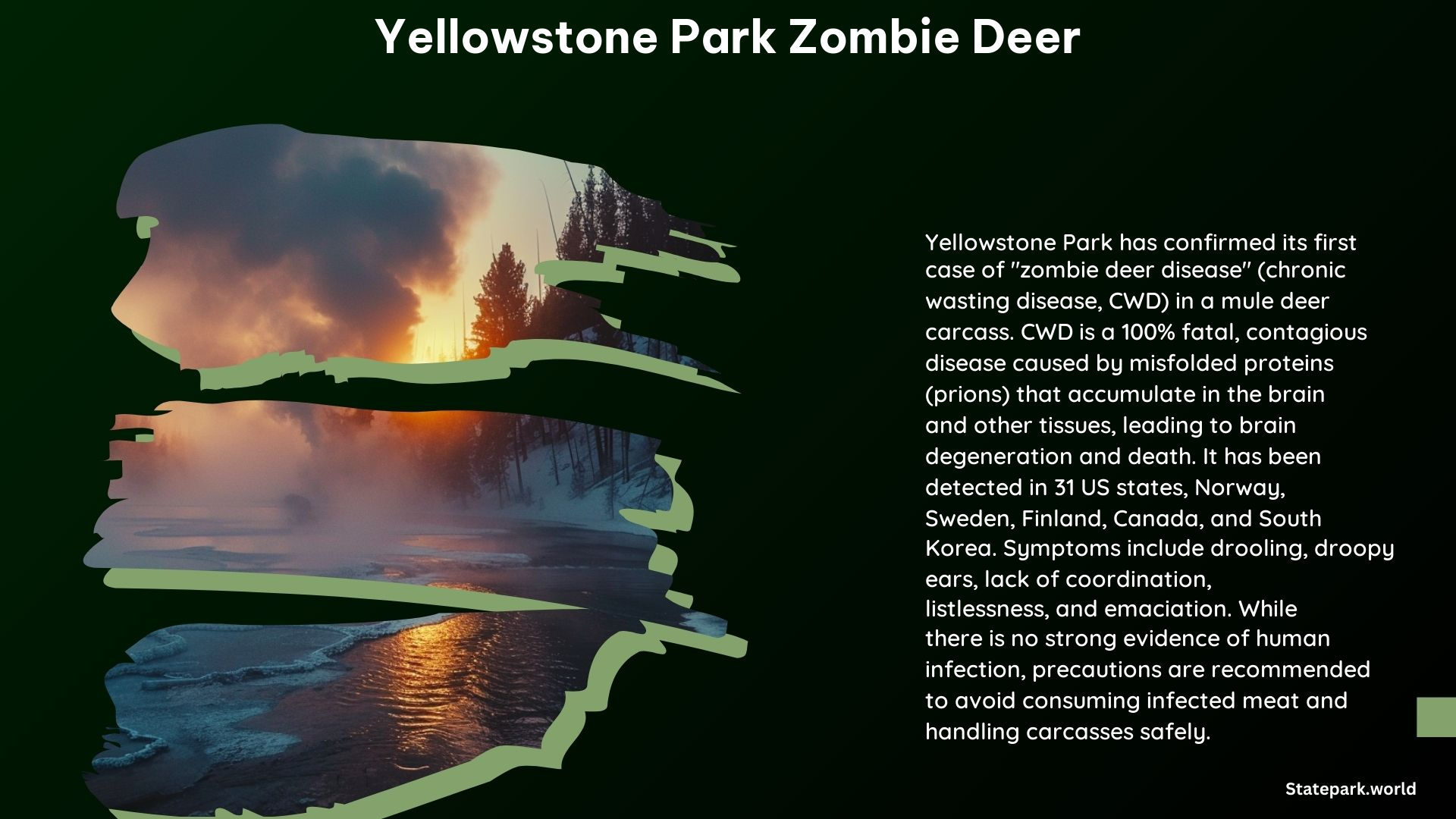Yellowstone National Park, a natural wonder renowned for its diverse wildlife, has recently faced a concerning challenge – the first confirmed case of chronic wasting disease (CWD), also known as “zombie deer disease,” in a mule deer. This neurodegenerative disorder, caused by abnormal proteins called prions, has been silently spreading across North America, posing a significant threat to the park’s iconic deer, elk, and moose populations.
Understanding Chronic Wasting Disease in Yellowstone
Chronic wasting disease is a fatal neurological disorder that affects cervids, a family of animals that includes deer, elk, moose, and caribou. The disease causes a range of symptoms, including drooling, lethargy, and a characteristic “blank stare,” earning it the unsettling nickname “zombie deer disease.”
Symptoms and Transmission
The symptoms of CWD are often subtle in the early stages, making it difficult to detect. As the disease progresses, the infected animals may exhibit behavioral changes, such as excessive drooling, loss of fear of humans, and a general lack of coordination. Ultimately, the disease leads to the animal’s death.
CWD is primarily transmitted through direct animal-to-animal contact or indirectly through contact with infectious particles persisting in the environment, such as feces, soil, or vegetation. This means that the disease can be spread even in the absence of visible sick animals.
Risks to Humans
While there is currently no strong evidence that CWD can infect humans, experimental research suggests that it is a possibility, especially if humans consume infected meat. The potential for the disease to jump the species barrier is a significant concern for public health authorities.
Precautions and Preventive Measures

To mitigate the spread of CWD in Yellowstone National Park, experts recommend several precautions and preventive measures:
Increased Surveillance and Testing
The National Park Service and wildlife management agencies have implemented enhanced surveillance and testing programs to monitor the prevalence of CWD in the park’s deer, elk, and moose populations. This includes regular testing of harvested game animals and monitoring of sick or dead wildlife.
Avoiding Consumption of Infected Meat
It is crucial for visitors to Yellowstone National Park to avoid consuming any part of an animal that is suspected or confirmed to have CWD. Consuming infected meat could potentially expose humans to the disease.
Preserving Natural Predators
Wildlife conservationists advocate for the preservation of natural predators, such as wolves, cougars, and bears, as they play a vital role in controlling the spread of CWD. These predators can help remove sick animals from the population, reducing the overall prevalence of the disease.
Ecological Implications
The presence of CWD in Yellowstone National Park raises concerns about its potential impact on the park’s large mammal populations, including grizzly bears, wolves, and cougars. These predators rely on deer, elk, and moose as a primary food source, and the decline of these prey species could have cascading effects on the entire ecosystem.
Reporting Sick or Dead Wildlife
If visitors to Yellowstone National Park encounter any sick or dead wildlife, they should immediately notify a National Park Service employee. Avoiding contact with the animal is crucial to prevent the potential spread of CWD or other diseases.
Conclusion
The discovery of chronic wasting disease in Yellowstone National Park is a significant challenge for the park’s wildlife management and conservation efforts. By understanding the symptoms, transmission, and risks associated with CWD, visitors can play a crucial role in supporting the efforts to mitigate the spread of this disease and protect the park’s iconic wildlife. Through increased surveillance, responsible consumption practices, and the preservation of natural predators, Yellowstone can continue to thrive as a haven for diverse and healthy wildlife populations.
References:
- https://www.theguardian.com/environment/2023/dec/22/zombie-deer-disease-yellowstone-scientists-fears-fatal-chronic-wasting-disease-cwd-jump-species-barrier-humans-aoe
- https://www.newsnationnow.com/health/zombie-deer-disease-yellowstone/
- https://www.aljazeera.com/news/2023/12/28/what-is-the-zombie-deer-disease-that-experts-warn-may-spread-to-humans
